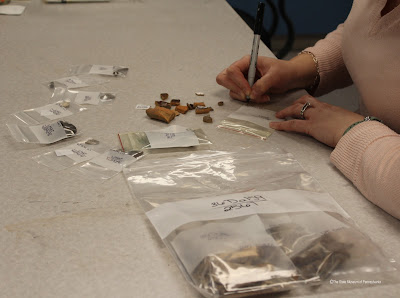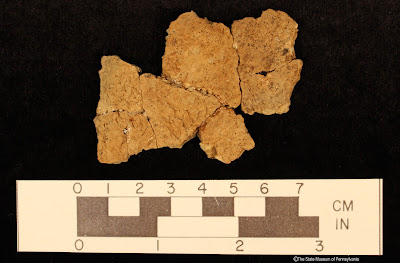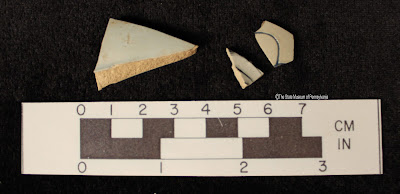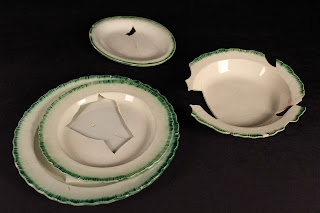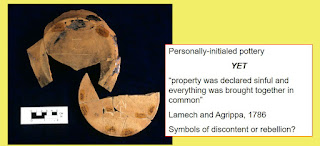There is an edible world around us
that was expertly known and used for millennia before the arrival of the first
Europeans to North America. Even the early settlers had an acute knowledge of plants
and their culinary and medicinal uses. Today, much of the knowledge once
considered essential for life has been traded for easily accessible and neatly
packaged foods and medicines. It can be easy to forget that much of what we
take for granted, both in cuisine and medicine is deeply rooted in the past.
Indigenous knowledge of the natural
world has been passed from generation to generation through a rich oral
tradition. The study of plants and their uses through cultural knowledge is
called ethnobotany. Beyond the staples corn, beans, and squash, famously
referred to as the three sisters, a multitude of other plants were utilized by
the prehistoric people who thrived in North America. In many parts of the
world, similar traditional knowledge persists to this day out of necessity or
tradition.
 |
A indigenous man and woman sitting on a rush mat eating fruit(?).
(Image: White, John, 1906,0509.1.20, www.britishmuseum.org/collection., 1585-1593, Online. Accessed 12/21/2017.)
|
Plant remains are relatively rare
in Pennsylvania’s archaeological record due to the poor preservation of organic
material, but plant use is well documented in ethnographic accounts of historic
tribes and knowledge held by modern indigenous communities. Some indigenous
groups have been reluctant to share traditional medicinal knowledge with
outsiders out of concern that it will be used by pharmaceutical companies
wishing only to profit from the information without respect or acknowledgement
to the indigenous communities and their intellectual rights.
In North America, many species
which we today consider to be weeds or nuisance plants had culinary or other
importance to indigenous people. The plants most often used by Native Americans
were also the most common and in many cases, are still common today. Plants
were collected with respect and attention to conservation to ensure its
survival. The time of year in which the plant was collected could determine its
intended use. Some plants collected for culinary use as sprouts may be
collected for their flowers or roots once mature, other plants become
poisonous. It is important to know and understand the plants which are being
collected.
 |
A
depiction of Native Americans harvesting bark and fruit from trees near a
settlement.
(Illustration:
Jonathan Frazier)
|
The study of medicinal plants and
substances through cultural knowledge is called ethnopharmacology. It is not secret that many over the counter
and prescription drugs find their roots in nature. Aspirin’s pain relieving
ingredient has its history in willow bark, which could be steeped in water and
drunk as a tea. Beano, another common drug and anti-flatulent, gets its
effectiveness from an enzyme found in the fungus responsible for black mold.
Surprisingly, around 50% of cancer treatment drugs approved in the last 30
years are derived either directly or indirectly from nature. The most common
ailments treated by medicinal plants were those of the gastro-intestinal
system. Today, many natural teas can be found in your local grocery store
intended to treat the same issues and using some of the same plants, such as
mint and ginger.
Although many native plants have
fallen out of favor for culinary use, others have been elevated to such high
status as to collect a hefty price tag at modern markets. In many parts of
North America, spring brings an abundance of desirable wild foods including
morel and chanterelle mushrooms, ramps (a wild leek with a mild garlicy onion
flavor), and fiddleheads (fern sprouts).
 |
Foods (meat, maize, etc.) cooking in
a pot over a fire.
(Image: White, John,
1906,0509.1.11.a, www.britishmuseum.org/collection., 1585-1593, Online. Accessed 12/21/2017.)
|
Pennsylvania is fortunate to host
an abundance of wild plants. Modern foragers, much like those of the past, look
forward to Spring when nature’s bounty abounds. With the shortest day of the
year now behind us, we can look forward to Spring and all it brings.
You can explore more Native
American foodways at the State Museum of Pennsylvania’s booth at this year’s
Pennsylvania Farm Show, taking place Jan 6-13, 2018 in Harrisburg, PA. The
State Museum will host an exhibit space featuring information on native
American foodways and the history of the development of agriculture in
Pennsylvania. Prehistoric artifacts on display illustrate the transition for
native groups from primarily hunters and gatherers to farmers. The changes in stone tools including spear
points and atlatl weights during the Transitional Period (2900 BP- 4850 BP) to stone
hoes and pestles in the Woodland Period (1550 AD- 2900 BP) reflect this culture
change. A corn grinding station utilizing stone tools allows visitors to
experience the process used by native peoples. Our booth will be located
opposite the carousel in the Main Exhibition Hall of the Farm Show Complex. Mark your calendar and plan your visit to the
102nd Pennsylvania Farm Show (http://www.farmshow.pa.gov/Pages/default.aspx)
References:
Densmore, F. (1974). How Indians Use Wild Plants for
Food, Medicine & Crafts. General Publishing Company, Ltd.
Medve, R. and Medve, M. L. (1990). Edible Wild Plants of
Pennsylvania and Neighboring States. The Pennsylvania State University.
Uprety et al. (2012). Traditional
Use of Medicinal Plants in the Boreal Forest of Canada: Review and
Perspectives. Journal of Ethnobiology and Ethnomedicine, 8(7). https://ethnobiomed.biomedcentral.com/articles/10.1186/1746-4269-8-7
Veeresham, C. (2012). Natural products derived
from plants as a source of drugs. Journal of Advanced Pharmaceutical
Technology & Research, 3(4), 200–201. http://doi.org/10.4103/2231-4040.104709
For more information, visit PAarchaeology.state.pa.us or the Hall of Anthropology and Archaeology at The State Museum of Pennsylvania .





